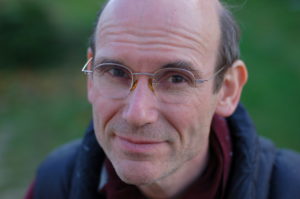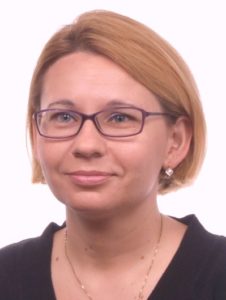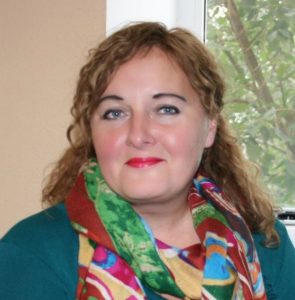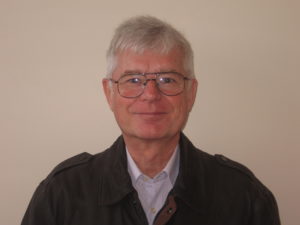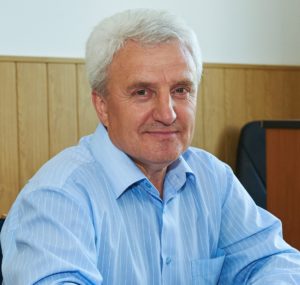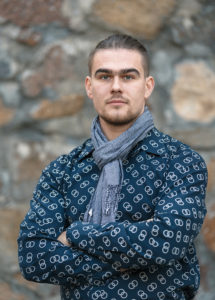Research grants 2019
The HREC Research Grants Competition is held annually to support academic research on the Holodomor, the publication of research results, the preservation of materials, and the organization of and participation in academic venues. Each year, a new thematic focus is established, though proposals for other topics are considered. The applications are reviewed by a committee of scholars and HREC associates.
-
2019 HREC Research Grants Competition
HREC awarded a total of $45,400 CAD for 24 grants, ranging from $700 to $4,000, through its 2019 Research Grants Competition. This year's competition called for projects that focus on Holodomor research and publishing of research results, preservation of materials, and organization of and participation in conference sessions and workshops dealing with the Holodomor. This would include research examining the fate of ethnic Ukrainians and minorities during collectivization and the Holodomor, diaspora communities and their kin in Soviet Ukraine during the Holodomor; information on collectivization and the Holodomor gathered by governments of other countries and their policies toward the Soviet Union at the time of the Famine; and understanding of the Holodomor at the national and sub-national levels (e.g., oblasts, raions, villages).
Individual Projects 2019
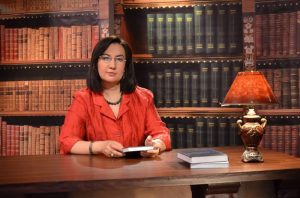
Gulnara Bekirova
Special Commission of the Kurultai for the Study of the Genocide of the Crimean Tatar People (Kyiv)
“Deportations and Famine: (Post-) Memory among the Crimean Tatars about the Commonality of the Ukrainians’ and the Crimean Tatars’ Date in the Stalinist System”
As part of a comprehensive analysis of published and new oral testimonies with Crimean Tatar witnesses and their descendants on experiences of deportation and famine, the project analyzes both methods of preservation and the translation of memory between generations as well as the perception and presentation of the Ukrainian historical past by the Crimean Tatars.
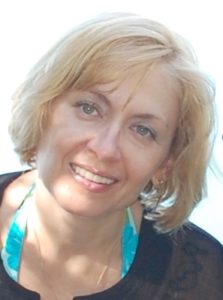
Olga Bertelsen
European Univ. Institute, Robert Schuman Centre for Advanced Studies (Florence)
“The Chekists’ Discussions of the Holodomor: From GPU Interrogation Rooms to the KGB Headquarters”
This project examines the chekist rhetoric employed during interrogations of the intelligentsia in 1932-33 and analyzes the persistent return to the topic of the Famine in the activities of the GPU as torturers and interrogators. The objective is to illuminate the significance of the Holodomor to chekists and their attempts at preventing the tragedy from becoming public knowledge and a concern to the international community.

Tetiana Borodina
PhD stud., National Univ. of “Kyiv-Mohyla Academy” Doctoral School
“Ukrainians and the Jews in Times of Adversity: Co-existence in the Poltava Region, 1928-43”
The project studies the co-existence of Ukrainians and Jews in Poltava region, a range of behavior strategies in times of adversity, and relationships shaped by policies of dominant powers, which included collectivization, the Great Terror, and the Holocaust.

Marin Coudreau
Centre d’études des mondes russe, caucasien et centre-européen (Cercec) à l’Ecole des Hautes Etudes en Sciences Sociales (EHESS) (Paris)
“A Combined War against the Peasantry and its Environment: Mass Repression, Nature Destruction and the Famine of 1932-33 in Soviet Ukraine”
The study focuses on pest control science after the Great Break and geographies of the “reconstruction of agriculture” and pest eradication operations as intertwined with the repression of the peasants based on new archival materials from Ukraine. This research looks at the interrelated social and environmental factors involved in violence and destruction of life processes during the Famine.
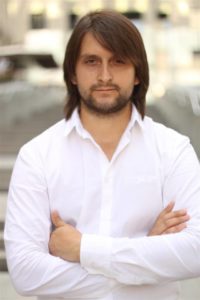
Dmytro Havryliuk
Drahomanov National Pedagogical Univ. (Kyiv)
“The Holodomor in Ukrainian Political Discourse”
This project looks at the politicization by various actors of the topic of the Holodomor as a genocide of the Ukrainian people, starting from the legislative recognition of the Holodomor as genocide. The project will consider the political forces that have since the Revolution of Dignity in 2014 questioned the Holodomor as genocide and have drawn on Russia’s official narrative of the Holodomor, its causes, and consequences.
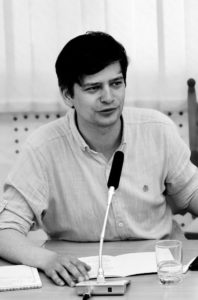
Mykola Horokh
Tarnovsky Chernihiv Regional Historical Museum
“Archival Research for a History of the All-Ukrainian “Torgsin” Office and Its Regional Branches”
The project explores the phenomena of the “Torgsin” hard currency stores, where during the Holodomor, starving peasants and urbanites traded family heirlooms for a chance to save their own lives and the lives of their relatives. Descendants were thus deprived of inheriting family valuables and cut off from connections to family traditions sacrificed for survival’s sake. The study is based on archives largely unknown to scholars of the Vinnytsia and Odesa “Torgsin” networks as well as in Mykolaiv and Kherson.
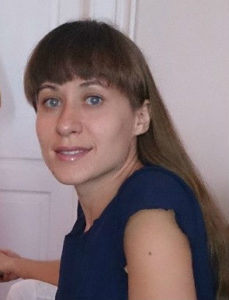
Yulija Hryshchenko
Institute of the History of Ukraine (NASU) (Kyiv)
“Bulgarians in the Ukrainian SSR at the Time of Sweeping Collectivization and the Holodomor”
This project seeks to incorporate documents discovered in central archives of Ukraine, as well as in regional archives of Dnipro, Odesa, Zaporizhzhia, Kryvyi Rih and Mykolaiv, into ongoing research on the impact of the 1928-29 grain procurement campaign, collectivization, and the Holodomor on the Bulgarian villages of the Ukrainian SSR.
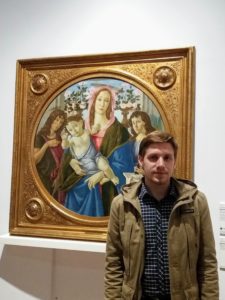
Serhii Humennyi
PhD stud., Taras Shevchenko National Univ. of Kyiv
“lllegal Migration across the Border between Poland and the Ukrainian SSR on the Eve and during the Holodomor”
This study focuses on the crossing and smuggling of individuals and groups across the Polish–Ukrainian SSR borders by peasants, workers and clergy before and during the Holodomor through the prism of peasant resistance in the Shepetivka-Volochyska-Hrytseva area under conditions of increased border security. The study looks at previously unknown documents of civic committees created in Western Ukraine that assisted famine victims and those who escaped the USSR, including recorded testimonies of the illegal immigrants.
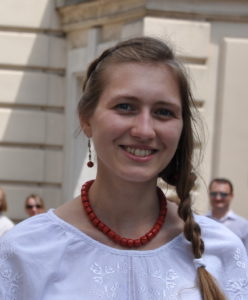
Anastasiya Kanivets
Museum of Theater, Music and Cinema of Ukraine (Kyiv)
“Representation of Famine in Film”
The representation of the Holodomor in films has yet to receive significant scholarly attention. These films, although sharing a common subject, differ in terms of when they were created and country of origin, and therefore in terms of point of view and "cinematic mentality," offering their own visions of the tragic events. This project compares such films and examines what they reveal not only about the Holodomor but about the contexts in which they were made.
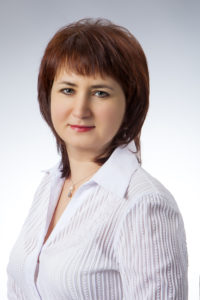
Valentyna Kharkhun
Nizhyn Mykola Gogol State University
Organization of a panel at the 2019 ASEEES Convention titled “The “True Believers,” Victims, and Resistors: How the Holodomor is Reflected in Historiography and Memory Politics”
The grants supports a conference panel on the Holodomor in historiography and memory politics and examines how memorializing the Holodomor contributes to the uniqueness of Ukraine’s “battlefield of victimhood” inside the country as well in the context of European “memory wars.” Presentations address how memory politics have affected their museumification since Ukraine’s independence in museums of Soviet occupation, memorials, and museums of victims of the Soviet regime, and museums of the Holodomor.
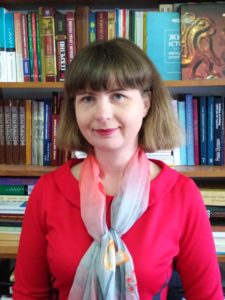
Natalia Kuzovova
Kherson State University
“The Holodomor in 1932-33 on the Regional Level of the Territory of Contemporary Kherson Oblast”
The project encompasses preparation and publication of a monograph dedicated to the events in 1932-33 on the territory of contemporary Kherson oblast.

Lubomyr Luciuk
Royal Military College of Canada
Translation of “How People Live in Soviet Russia: Impressions from a Trip” (1933) by Mendel Osherowitch
The project will result in the translation of Medel Osherowitch’s “How People Live in Soviet Russia: Impressions from a Trip,” a Yiddish-language memoir that includes an account of the Great Famine of 1932-33 in Soviet Ukraine.
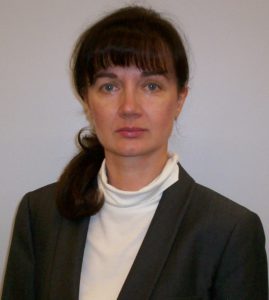
Victoria Malko
California State Univ., Fresno
“Women and the Holodomor-Genocide: Victims, Survivors, Perpetrators”
“Women and the Holodomor-Genocide” is a first-of-its-kind publication foregrounding the experiences of women during the Holodomor not only as victims but also as perpetrators. The published symposium proceedings will add to our understanding of gender aspects of the Holodomor as two-thirds of Holodomor eyewitness testimonies have been provided by women. Their voices and perspectives are key to understanding violence in societies where genocide occurs.
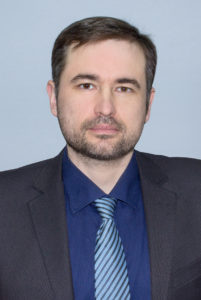
Andrii Masliuk
H.S. Kostiuk Psychology Institute (NAPS) (Kyiv)
“Traumatic Psychological Impact of the Holodomor on Future Generations”
This project assesses the traumatic psychological impact of the Holodomor on the descendants of survivors from Chernihiv, Sumy, Poltava, Kyiv, and Kherson oblasts as compared to the same generation of those who grew up in Lviv and Volyn oblasts and whose ancestors were not affected by the Holodomor.
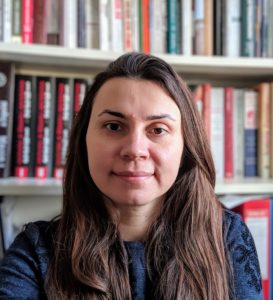
Daria Mattingly
University of Cambridge
Participation at the roundtable entitled “Contemporary Narratives on Jews in Ukraine” at the ASEEES Convention in San Francisco, November 23-26, 2019
The session focuses on various narratives of Jews and Ukrainians in the Holodomor and the Holocaust, revealing the diversity and peculiarity of the experiences of Jews as perpetrators, victims and bystanders, and contributing to the evolving social history of Stalinist violence and to Holodomor Studies more generally. With panel participants Marta Havryshko, David Marples, Andrii Usach, Yurii Radchenko, and Jeffrey Kopstein.
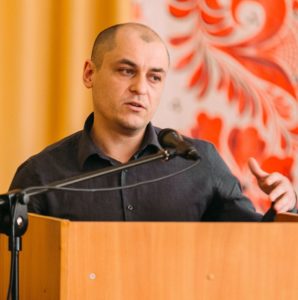
Vitalii Ogiienko
Ukrainian Institute of National Remembrance (Kyiv)
“Holodomor as Historical Trauma”
The study examines the influence of the experience of trauma during the Holodomor on cultural memory, including how this memory has been transmitted over generations. The project looks at the transmission of accumulated symptoms, images, representations, and discourses prompted by the experience of trauma and includes analyses of memoirs, journal articles, fiction, folkloric literature, and testimonies.
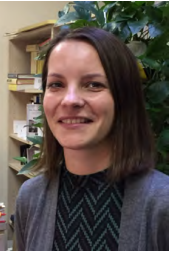
Iryna Skubii
Petro Vasylenko Kharkiv National Technical Univ. of Agriculture
“Materiality and Economics of the Holodomor through the Biography of Things”
The project is devoted to the history of materiality and economics of the Holodomor, analyzing a wide range of victim testimonies. A digital history approach will result in creation of a database of the material things and commodities mentioned in respondents’ interviews with reference to their life-saving importance. Based on the methodology of creating a cultural biography of things, this research highlights fundamental changes in the importance of commodities and goods during the famine.
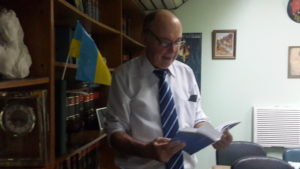
Jeremias Taurydzkyj
Independent Researcher and Translator (Argentina)
“1932-33 Holodomor: Ukrainian Genocide” (Translation and publishing of a book of selected texts about the Holodomor from Ukrainian into Spanish)
Translation of seminal works on the Holodomor into Spanish: «Торкнутись Історії» [Touching History] by Yurii Shapoval; “Розсекречена пам’ять” [Declassified Memory], Borysenko, ed., Danylenko, Kokin, et al.; and “Голодомор на Україні (1932-1933)” in Polish and Ukrainian, Bednarek ed., Bohunov, Kokin et al.
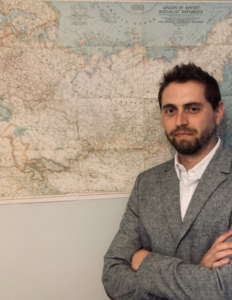
John Vsetecka
PhD stud., Michigan State University
“The US Commission on the Ukraine Famine and the Shaping of the Post-Holodomor Narrative”
Centering on the work of the US Commission on the Ukraine Famine, a congressionally approved body appointed to collect survivor testimony and produce reports outlining the causes of the famine in Ukraine, the project is part of a larger dissertation project titled "In the Aftermath of Hunger: Coming to Terms with Famine in Soviet Ukraine, 1933-47."
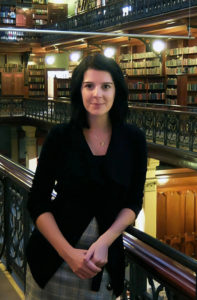
Elise Westin
PhD stud., Univ. of Adelaide (Australia)
Two Presentations for the 2019 International Association of Genocide Studies (IAGS) Conference in Phnom Penh
The two presentations, entitled ‘The Missing Picture in Holodomor Discourse: An Analysis of the Representation of Women in ‘The Black Deeds of the Kremlin’ and ‘The Couple in the Woods: Fragments of a Memoir’ form part of a larger project to understand how first and second generation survivors shape the collective self in Holodomor survivor literature and how the trauma affects the identities of both survivors and future generations.
Collaborative Projects 2019
L. H. Lumey
MD, Mailman School of Public Health Columbia University
Oleg Chertov
National Technical University of Ukraine "Igor Sikorsky Kyiv Polytechnic Institute"
“Long-term Consequences of the Holodomor: Exposure of a Fetus to Severe Famine and Diabetes Type 2”
The project furthers a 2015 study by Ukrainian and American epidemiologists, which showed that unborn children of women exposed to the Famine had a large increase in type 2 diabetes later in life. New data from the national diabetes register in Kyiv shows that men and women born in areas with high losses during the famine had a 50 percent increase compared to those born in control areas. With data now available from all oblasts (rather than nine in 2015), this study updates conclusions on the long-term impact of the Holodomor on this common disease.
Anna Piotrowska
Jagiellonian Univ. (Krakow)
Viktoria Soloshenko
Institute of World History (NASU)
“Between Poland and Ukraine: Representing Holodomor in the Arts and Music”
In a comparative Ukrainian-Polish perspective, this project looks at artistic representations of the Holodomor in the arts and music with the aim of determining how the Holodomor has been commemorated –narrated and interpreted – by those affected but also by subsequent generations. The aim is to identify tendencies and trends affecting these commemorations.
Oleh Wolowyna
Univ. of North Carolina at Chapel Hill
Larysa Yakubova
Institute of History of Ukraine (NASU) (Kyiv)
“Estimation of 1933 Rural Holodomor Losses of Five Nationalities in Soviet Ukraine: Ukrainians, Russians, Poles, Germans and Jews”
A key question about the Holodomor is whether it targeted mainly ethic Ukrainians or all citizens of Soviet Ukraine. This study employs demographic analysis of urban and rural losses at the national and oblast levels, coupled with death and birth data by nationality – Ukrainians, Russians, Poles, Germans, Jews to document the effect of the Holodomor on these nationalities.
Tetiana Zabolotna
Institute of the History of Ukraine (NASU) (Kyiv)
Oleksandr Lysenko
Institute of the History of Ukraine (NASU) (Kyiv)
Oleksandr Mayevsky
Institute of the History of Ukraine (NASU) (Kyiv)
“Unknown Destinies of the Ukrainian Demographers and Statisticians Under the Nazi Occupation (1941-44): The Case of Stepan Sosnovy”
This research examines the scholarly and popular writings of Stepan Sosnovy published in periodicals during the Nazi occupation and manuscripts prepared for the Reichsleiter Rosenberg Operations Headquarters and will include analysis of the factual and ideological content of Sosnovy’s publications about the Holodomor and their impact on historical memory in Ukraine.
